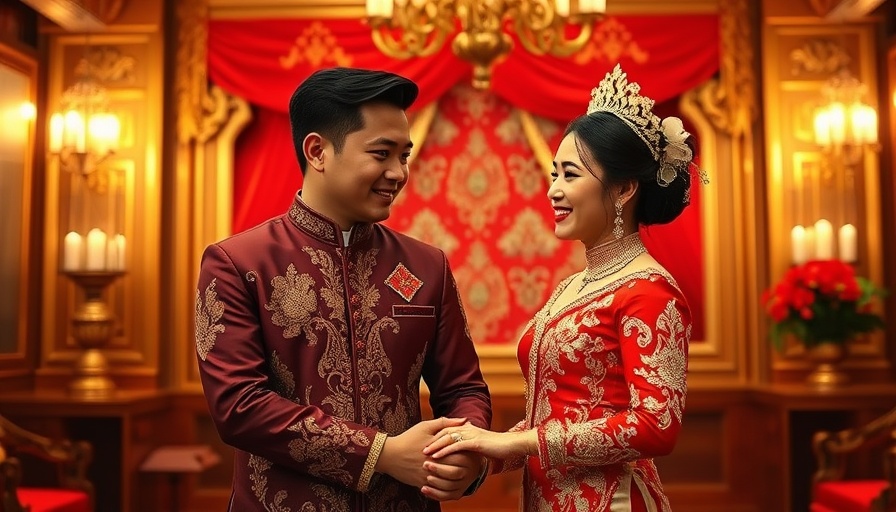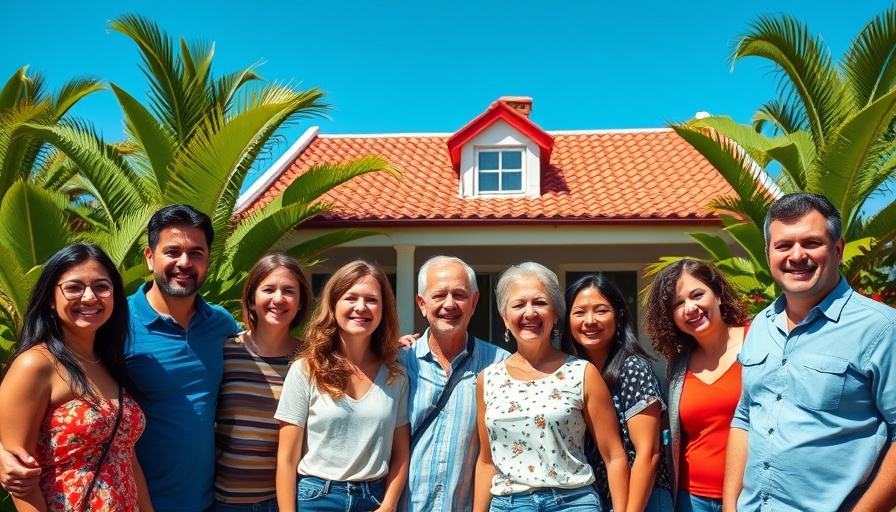
Embracing Thai Culture Through Wedding Traditions
When it comes to weddings, cultural differences shape the celebration in diverse and beautiful ways. A recent wedding highlighted in a captivating YouTube video illustrates just that, showcasing a traditional Thai ceremony that blends cultural significance with personalized touches. As my readers may know, the fusion of cultures is a vital part of understanding our world today, and this wedding offers a window into both the charm and complexity of Thai matrimonial customs.
In 'Our Thailand wedding - Getting married in Thailand,' the couple discusses their vibrant wedding ceremony, unmasking the delightful complexities that prompted this analysis.
A Wedding Rich in Symbolism: The Importance of Numbers
The video dives into the significance of numbers within Thai weddings, particularly the number nine, which the couple incorporated into their ceremony. This connection to numerology is a fascinating aspect of Thai culture, where certain numbers are believed to bring good luck and blessings. For example, the wedding was set to commence at 9:39 AM, with the first ceremony segment beginning at 10:09 AM—both of which were selected to align with this cultural superstition. Understanding such traditions can encourage a richer appreciation for how different cultures celebrate life events.
Challenges and Creativity: Adjusting Venue Plans
Weddings rarely go off without a hitch, but the couple faced a significant challenge—they lost their original venue due to a flood. In response, they showed resilience and creativity by finding a new location that suited their needs. Their ability to adapt to these circumstances emphasizes the importance of flexibility in wedding planning, a lesson that can resonate with couples worldwide as they navigate their own wedding journeys.
Traditional vs. Modern Customs: A Cultural Dialogue
The couple's experience touches on the delicate balance between honoring traditional practices and embracing modern perspectives. The groom faced obstacles in the traditional Thai processional, required to prove himself worthy of his bride through challenges. In contrast, Joy expressed her discomfort with the idea of a dowry, a common practice in which the groom pays the bride's family. Their conversations illustrate the evolving dynamics in relationships and how couples can navigate cultural expectations. This dialogue is critical in understanding how wedding customs shape relationships across cultures.
The Role of Family in Thai Weddings
One notable aspect of this wedding was the integral involvement of family, highlighting their importance in Thai ceremonies. From receiving invitations personally to performing blessings on the couple's marital bed, family members played significant roles throughout the event. This serves as a reminder of the familial bonds that tie individuals together, reinforcing the notion that weddings are not just unions of two people but celebrations of family.
A Feast for the Senses: Culinary Delights
Food also played a pivotal role in the celebrations, transforming the wedding venue into a vibrant street market filled with various Thai delicacies. Guests enjoyed a feast of local dishes, creating an atmosphere of community and festivity. Incorporating local cuisine into wedding celebrations can provide a unique twist that reflects cultural heritage, making the event memorable for everyone involved.
The Significance of Marital Rituals
Among the unique features of a Thai wedding is the practice of tying holy threads around the couple's wrists, symbolizing their union and commitment as they embark on their new life together. This intimate ritual emphasizes the spiritual connection involved in marriage and the weight of traditions carried forward between generations.
This wedding encapsulated the essence of Thai culture through its vibrant traditions, the importance of family, and even the challenges of merging personal preferences with cultural expectations. For those watching, it's an invitation to not only appreciate the beauty of such ceremonies but also to reflect on how traditions shape the framework of relationships and community connections.
As we explore global cultures, let’s embrace these traditions that reflect our shared humanity. Whether through travel, food, or simple cultural exchanges, we enrich our understanding of one another, building bridges across the globe.
 Add Row
Add Row  Add
Add 




 Add Row
Add Row  Add
Add 

Write A Comment